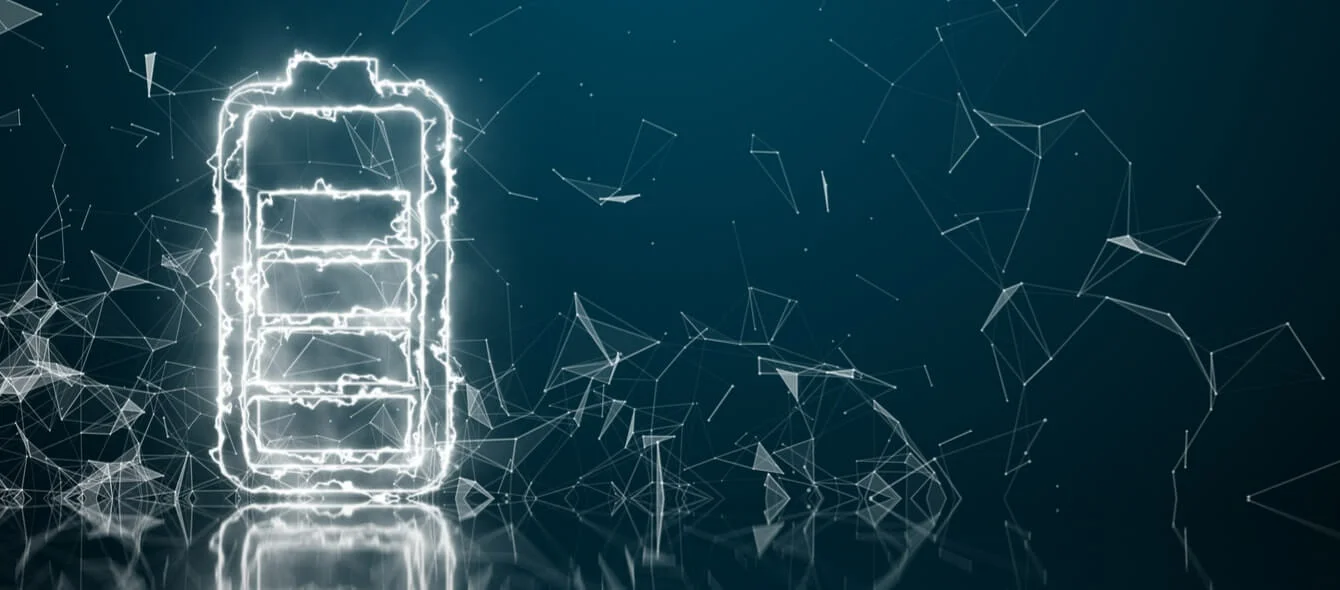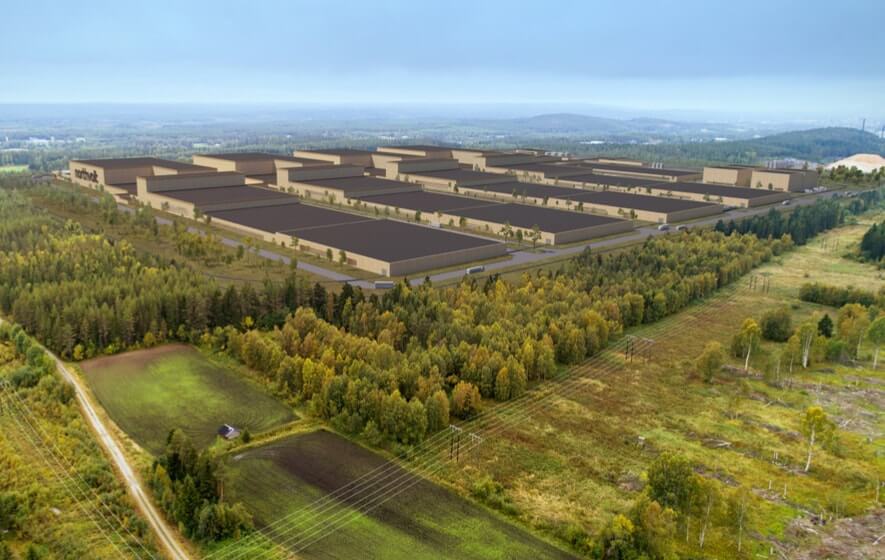The largest battery cell factory in the world is located in Nevada –Tesla-owned ‘Gigafactory 1’. In cooperation with the Japanese electronics group Panasonic, the US automobile manufacturer is able to produce batteries with a storage capacity of 22 gigawatt hours (GWh) annually, according to Benchmark Mineral Intelligence (BMI); and there will come a time when this figure is 50 GWh.
The market research service BMI, which specialises in the value chain of lithium-ion batteries (Li-Ion), has compiled a ranking of the largest battery producers in the world. They have found that two LG Chem and CATL production sites in China – each with 20 GWh – and a third with about 18 GWh, are almost tied with the Tesla plant. And coming in fifth, at 15 GWh, another factory of the world’s largest Li-Ion battery producer LG Chem, but this time: in Poland!
Top 5 of the world's mega factories of lithium-ion batteries
Total production of storage capacity in GWh per year (Source: Benchmark Mineral Intelligence).Last year, the Korean world market leader fired up Europe’s first large-scale battery storage factory near Wroclaw. For European politicians this is just the beginning: “Covering the EU demand alone requires at least 10 to 20 ‘gigafactories’,” says the EU Commission. This is why European battery cell production is to be subsidised with hundreds of millions of euros.
Germany backs battery facilities with one billion euros
The German federal government alone has promised funding of one billion euros by 2022. On 18 March, Federal Economics Minister Peter Altmaier announced that more than 30 companies and consortia from all sectors of the value chain had applied for a subsidy. Among them are also corporations with French and Polish applicants. In a joint declaration of intent, Altmaier and his Polish counterpart Jadwiga Emilewicz (Minister of Entrepreneurship and Technology) stress the importance of battery development. In December 2018, Altmaier reached a cooperation agreement with French Minister of Economy Bruno Le Maire in this regard. For its part, Paris will provide 700 million euros in start-up funding.
The European Commission supports various projects of the ‘European Battery Alliance’ (EBA) and has provided research funding amounting to almost 200 million euros. In addition, there are now financing aids for the construction of production facilities. Launched at the end of 2017, the EBA now has more than 250 private and public members – from raw material extraction to cell production and recycling. In addition to Europeans, there are also network partners from North America, Australia, Taiwan and Japan.
Automotive industry drives European battery production
Until now, small lithium-ion batteries have been used mainly in mobile phones, manual vacuum cleaners and maybe pedelecs. The technology will now also increasingly stabilise the electricity grid, by way of large-scale battery storage units, and make fluctuating generation from renewables such as wind and solar available 24/7. But, lithium-ion batteries are first and foremost intended to supply a growing number of electric vehicles with power.
Local battery production is therefore particularly important for the European automotive industry. From BMW and Daimler to Jaguar, Renault and PSA to Volvo and Volkswagen, automobile manufacturers continue to emphasise their interest in European battery cells.
Sustainability at the core of the brand
In January 2019, the previous top dog LG Chem announced plans to soon expand its production capacities in Poland, to the tune of up to 70 GWh per year. Daimler is investing half a billion euros in a second battery cell factory at its electric car location in Saxony. BASF plans to invest up to 400 million euros in factories for battery components in Europe, some of the raw materials for which will come from Finland. And the Chinese battery giant CATL apparently wants to build a factory in Thuringia.
A number of companies are collaborating with one particular newcomer on the market: Swedish company Northvolt, which was founded in 2016 at the initiative of two former Tesla managers looking to make “the greenest battery in the world”. Raw materials and energy are to be extracted and generated as sustainably as possible. The technology giants Siemens and ABB, among others, are on board, as well as the BMW Group with its brands BMW and Mini, and more recently, Volkswagen. According to the company, three production facilities are now under construction: two in Sweden and one in the Polish port of Gdansk. The European Development Bank EIB has backed Northvolt with a loan of 52.3 million euros.
Europe is catching up, but slowly
It would seem as though Europe has finally come around to the idea of making lithium-ion batteries – particularly as this overview of interested parties is by no means complete. If the EU wants to significantly advance electromobility in order to achieve its climate targets, however, things need to start happening now. Last December, the EU states agreed that automobile manufacturers must commit to reduce the CO2 emissions by 37.5 percent for their vehicle fleets and by 31 percent for light commercial vehicles by 2030. The Commission estimates the turnover of the battery market to be around 250 billion euros per year from 2025 onwards. A large part of the added value is to be created in Europe.
Continents in competition: annual production of batteries in Asia, China, Europe and North America
Total production of storage capacity in GWh per year (Source: Visual Capitalist / Benchmark Mineral Intelligence).How successful this will be depends on how quickly and how many electric cars can be built, and how great the demand is for other applications. Asia is the undisputed global centre of battery production. The Canadian news agency Visual Capitalist has calculated a market share of 82 percent based on BMI data, of which three quarters is accounted for by China. According to the study, only nine percent of the world’s Li-ion storage capacity is produced in Europe. According to forecasts by industry insiders, this is unlikely to change any time soon.
Photo credits: Immersion Imagery, shutterstock.com

